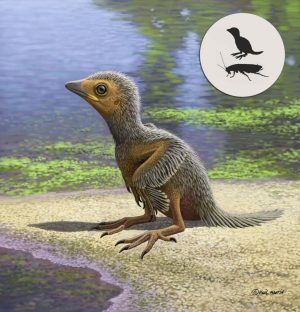Weekly stuff roundup: 9th March, 2018
Welcome to the first weekly roundup of vaguely interesting stuff that happened in the last week! Enjoy, and let me know if I’ve missed anything out.
Palaeontology stuff
- Knoll et al. (2018): A fossil of a juvenile enantiornithine tells us about the skeletal development in early birds during the Cretaceous period.
- LeBlanc et al. (2018): The oldest known evidence of a lizard-like behaviour called ‘autotomy’, where a portion of the tail is dropped in response to an attack from a predator.
- Wang et al. (2018): The oldest preserved salt glands in a dinosaur, suggesting that early birds were well-adapted to marine or desert-like environments.

Open Science stuff
- Updated parts of the Open Scholarship Strategy – anyone can contribute still here.
- Updated aspects of the Open Science MOOC, including the Learning Outcomes. Open for contribution still here.
- EUA questionnaire on Open Access 2017-2018 (for folks who work in EU-based research institutes).
- UK research funders target hybrid open access charges: Wellcome Trust and UK Research & Innovation launch reviews of policies that require funded papers to be made freely available (more from Wellcome here).
- Recommender Systems as Enabling Technology to Interlink Scholarly Information, Elisabeth Lex, Tony Ross-Hellauer, Dominik Kowald.
- Europe is set to miss its ambitious target of 100% Open Access by 2020 – Times Higher Education.
Jon stuff
- This PhD Careers podcast about, you guessed it, Open Science stuff..
- Got a nice travel award from IGDORE to spend some time working in Bali!
- Popped to the PEERE conference in Rome to discuss innovations in peer review. Slides available via Figshare.
- Blog post: The ethics of copyright transfer for scientific research.
Other stuff
- Who does the work of implementing DORA? – Martin Eve.
- Low agreement among reviewers evaluating the same NIH grant applications (PAYWALLED) – “Results showed no agreement among reviewers regarding the quality of the applications in either their qualitative or quantitative evaluations.” regarding NIH grant applications (but see this tweet from Richard van Noorden for some context).
All kinds of illegal stuff keeps coming out. How much illegal stuff does it take? Or is it one of those enough illegal stuff finally equals a legal stuff?